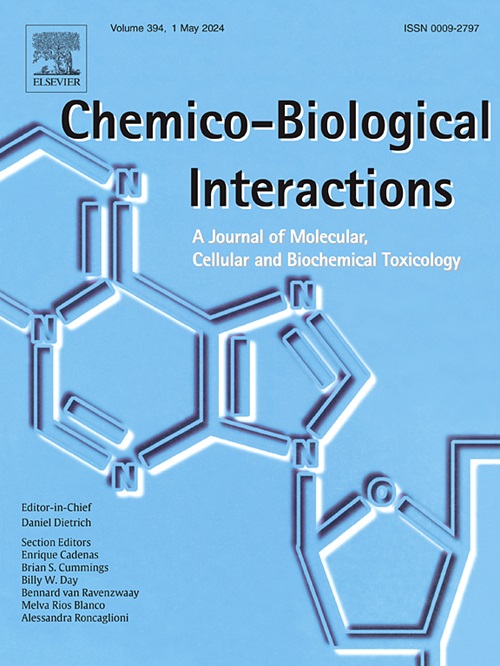评估未烯化和前烯化黄酮类化合物对雌激素受体-α的激动和拮抗作用。
IF 4.7
2区 医学
Q1 BIOCHEMISTRY & MOLECULAR BIOLOGY
引用次数: 0
摘要
戊烯酰化是一种疏水分子的加入,被认为可以提高类黄酮的生物利用度和生物活性。然而,戊烯酰化对不同结构黄酮类化合物的雌激素活性的影响尚不清楚。本研究采用OECD标准体外ER-α反活化实验和体内子宫肥厚实验,评价了雌激素受体α (ER-α)未烯丙基化和烯丙基化两种形式的雌激素类黄酮类化合物的激动和拮抗活性。利用ER-α- hela -9903细胞进行荧光素酶报告细胞实验,发现12种黄酮类化合物具有ER-α拮抗活性,其中只有6-烯丙基柚皮素(6-PN)具有ER-α拮抗活性。有趣的是,除了6-PN外,烯酰化类黄酮的ER-α激动活性与其母体化合物相比有所降低或相似。6-PN,而不是8-烯丙基柚皮素,与其母体化合物柚皮素相比,显示出增强的ER-α激动和拮抗活性。在所测试的化合物中,库美特罗在反激活和子宫萎缩试验中都表现出最有效的ER-α激动活性。25 mg/kg库美孕酮的子宫营养作用强于200 μg/kg的17β-雌二醇,子宫重量和雌激素反应蛋白表达均有明显变化。这些发现为黄酮类化合物的相对雌激素效力和戊酰化对其活性的影响提供了重要的见解。本文章由计算机程序翻译,如有差异,请以英文原文为准。

Evaluation of agonistic and antagonistic effects of unprenylated and prenylated flavonoids on estrogen receptor–α
Prenylation, which involves the addition of hydrophobic molecules, is considered to enhance the bioavailability and biological activity of flavonoids. However, the effect of prenylation on the estrogenic activity of flavonoids with different structures remains unclear. This study evaluated the estrogen receptor-α (ER-α) agonistic and antagonistic activities of estrogenic flavonoids in both unprenylated and prenylated forms using OECD standardized in vitro ER-α transactivation assay and in vivo uterine hypertrophy assay. A luciferase reporter assay using ER-α-HeLa-9903 cells revealed that twelve flavonoid compounds exhibited ER-α agonistic activity, and among them, only 6-prenylnaringenin (6-PN) exhibited ER-α antagonistic activity. Interestingly, except for 6-PN, prenylated flavonoids showed reduced or similar ER-α agonistic activity compared to their parent compounds. 6-PN, but not 8-prenylnaringenin, demonstrated both enhanced ER-α agonistic and antagonistic activity compared to its parent compound, naringenin. Among the tested compounds, coumestrol exhibited the most potent ER-α agonistic activity in both transactivation and uterotrophic assays. The uterotrophic effect of coumestrol at a dose of 25 mg/kg was stronger than that of 17β-estradiol at 200 μg/kg, as evidenced by changes in uterine weight and estrogen-responsive protein expression. These findings provide important insights into the relative estrogenic potency of flavonoids and the impact of prenylation on their activity.
求助全文
通过发布文献求助,成功后即可免费获取论文全文。
去求助
来源期刊
CiteScore
7.70
自引率
3.90%
发文量
410
审稿时长
36 days
期刊介绍:
Chemico-Biological Interactions publishes research reports and review articles that examine the molecular, cellular, and/or biochemical basis of toxicologically relevant outcomes. Special emphasis is placed on toxicological mechanisms associated with interactions between chemicals and biological systems. Outcomes may include all traditional endpoints caused by synthetic or naturally occurring chemicals, both in vivo and in vitro. Endpoints of interest include, but are not limited to carcinogenesis, mutagenesis, respiratory toxicology, neurotoxicology, reproductive and developmental toxicology, and immunotoxicology.

 求助内容:
求助内容: 应助结果提醒方式:
应助结果提醒方式:


